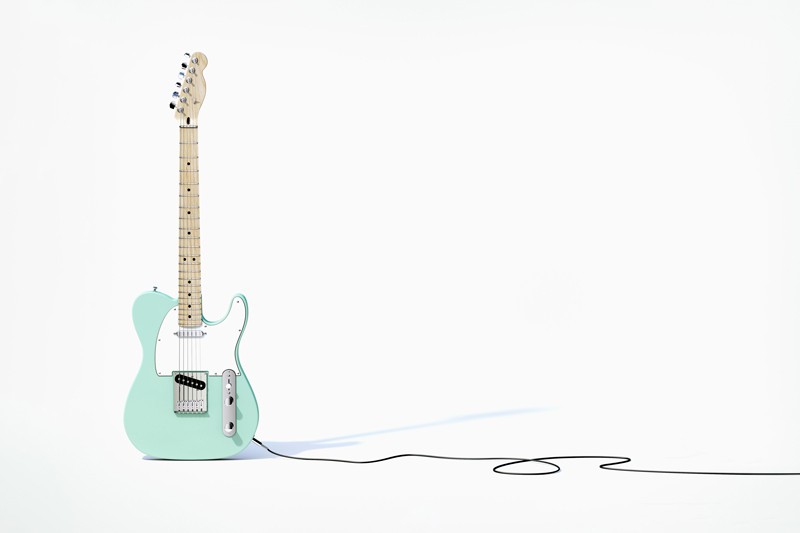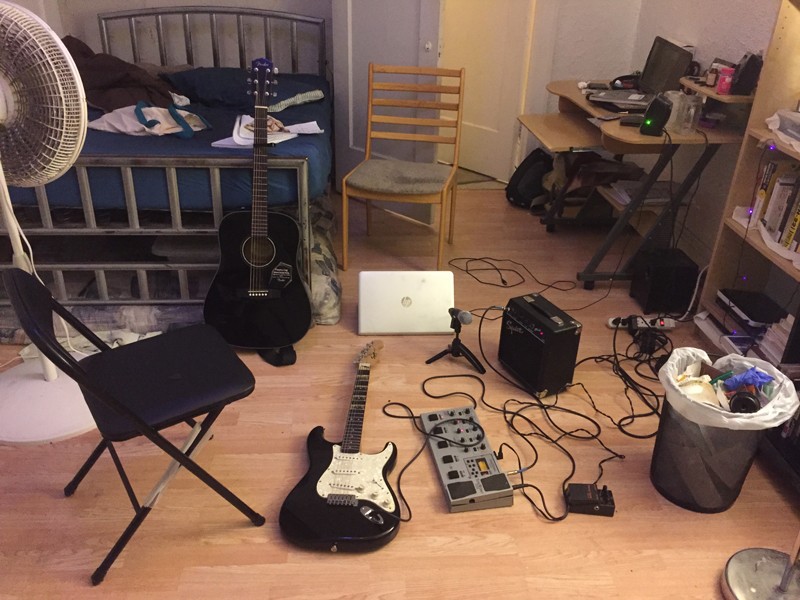As I adjusted the microphone and tightened my grip on the guitar, I broke into a sudden yawn, a familiar response to anxiety. I remembered my first scientific talk as a graduate student, trying desperately to convince an audience of about 100 people that my work was interesting and worthwhile. Here, at my first open-mic night at a local bar in Boston, Massachusetts, I had less at stake, but the urge to yawn remained the same — as did the anxiety.
It has been five years since I bought my first guitar with the hope of making songs out of the poems that I’ve been writing since I was a child. The excitement of spending hours trying to marry the right words with the right melody and recording a finished project helped me to escape from — and feel satisfied outside of — my usual grind in the lab as a PhD student at the University of Chicago in Illinois.
Now I’m a postdoc at Harvard Medical School in Boston, I don’t usually feel presentation jitters, and I have many more scientific papers and songs under my belt. I’ve spent the past few months cooped up at home during the COVID-19 lockdown, working on two review articles, preparing presentations for various virtual conference talks and getting back to my guitar after a long estrangement. This sequestered period has given me an opportunity to reflect on how songwriting has influenced my ability to communicate science. I feel I’m more confident, and perhaps more creative, because of songwriting.
Here’s my advice for anyone thinking of doing something similar.
Just start. Beginning is the hardest part of writing. With a faint idea for a song, my go-to strategy has been to explore chord progressions from popular songs, play them out of order and mix them up to see what works. Similarly, transcribing my thoughts as they occur, without bothering about a narrative structure, has immensely helped me to get my writing in motion, whether in technical papers or writing for the public. In this way, I know that I have all my ideas in one place, and that I can expand on them as I move through my piece.
Consider structure. With thoughts and ideas on paper, it is time to build the outline. When writing a paper or preparing a talk, there is always more to discuss than time or context permits. Therefore, identifying the few essential points provides the skeleton around which the entire presentation can be carefully fleshed out. It doesn’t matter if the outlines resemble short paragraphs (mine always do); you can always take words out. The Leonard Cohen song ‘Hallelujah’, one of the most popular ever recorded, has had more than 80 verses in various drafts.
Don’t bore us, get to the chorus. The chorus is the section of a song the listener takes away with them. Similarly, the audience will probably remember only one or two key points from a scientific presentation. So, I make sure to highlight the central theme of my talk and bring it back whenever possible, like a chorus. Listen to any radio hit to convince yourself of the power of repetition. Stating up front what the audience should care about and using the rest of the talk to support that take-home message has been effective for me at conferences.
Be mindful of moments of inspiration. My phone’s notes app is filled with phrases, rhymes and ideas that I was scared of forgetting amid the rest of life. Throughout graduate school and now in my postdoc, I have written down sentences and phrases I’ve enjoyed from papers. These notes have improved my scientific vocabulary and writing ability, and this, in turn, has improved my manuscripts. I often e-mailed my PhD adviser with single paragraphs, scribbled in moments of inspiration, that I thought would work for papers we were writing. Not only did those additions and ideas make the manuscripts better, but they provided new perspectives and triggered follow-up experiments. During the lockdown, I wrote a song based on lyrics I set down more than two years ago. So, never let ideas go completely — give them the chance to come back to you.
Take breaks. I tend to get carried away with my ideas. To combat that initial overenthusiasm, I leave my drafts alone for a few days after writing them. If I still remember the basic melody without having to listen to my recording of it, or if an idea for a paper or a presentation remains interesting, I know it is worth exploring further. Taking breaks from writing also presents an opportunity to step back, consider the bigger picture and home in on the central message. The first draft of this piece, written in late August, was very different from what you’re now reading.
I called on all my experience in performance and songwriting two years ago, when I took part in my university’s three-minute thesis competition, which involves clearly communicating a scientific thesis to an audience in the space of three minutes. That was when the links between my experiences as a scientist and a songwriter felt most obvious — but both are always useful off the stage, too.
"can" - Google News
November 10, 2020 at 01:41AM
https://ift.tt/3ePckPO
How memorable melodies can make your research sing - Nature.com
"can" - Google News
https://ift.tt/2NE2i6G
https://ift.tt/3d3vX4n
Bagikan Berita Ini
















0 Response to "How memorable melodies can make your research sing - Nature.com"
Post a Comment